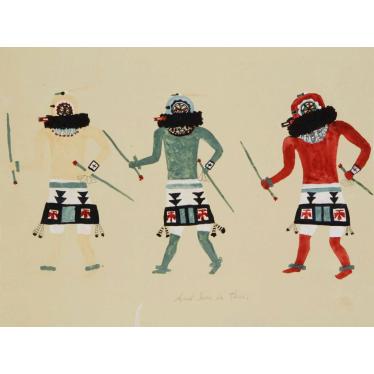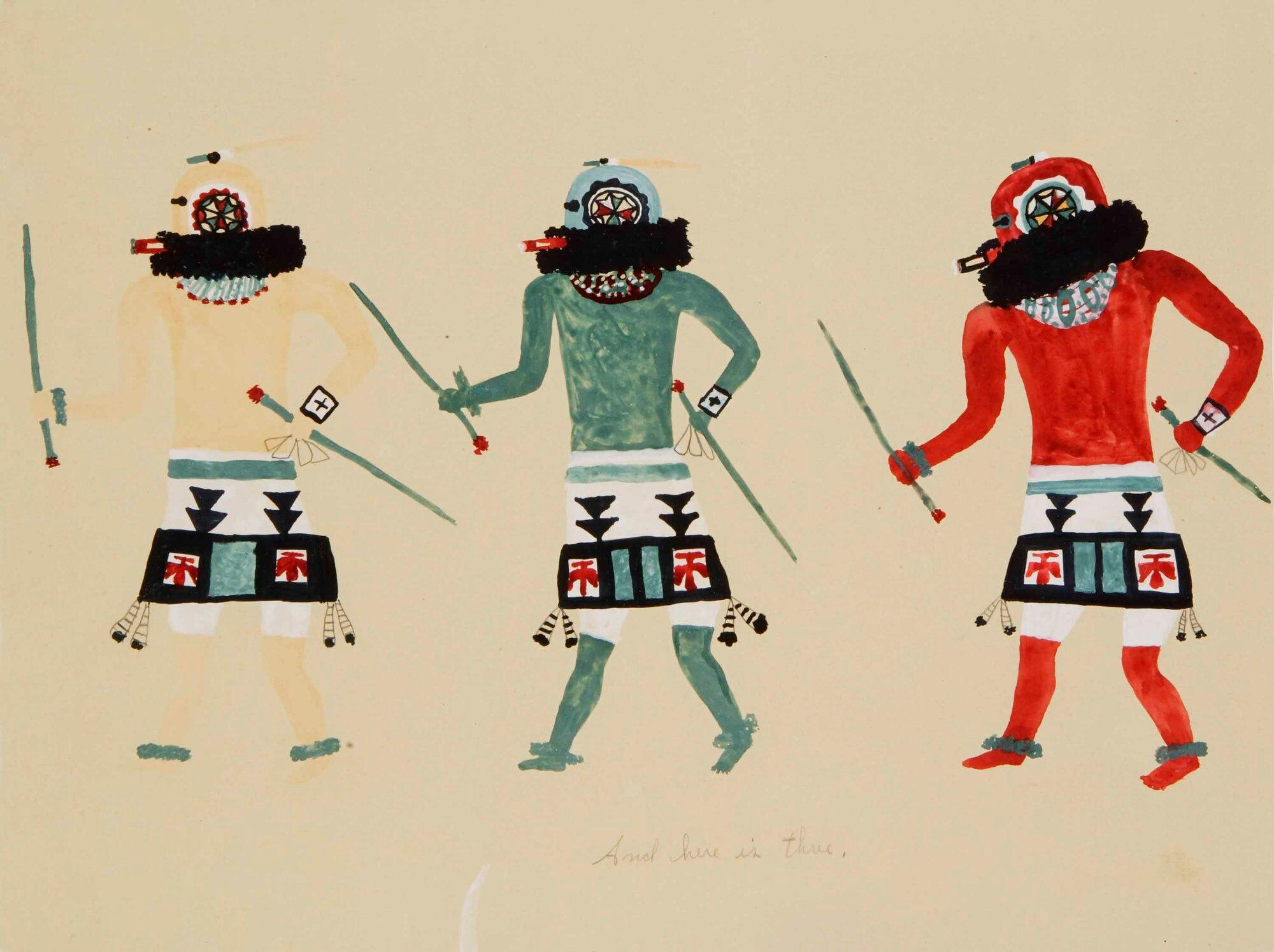
Photograph by Addison Doty. Copyright 2009 School for Advanced Research.
"Zuni Masked Dance"
Date: before 1933
Artist or Maker: Unknown
Dimensions:
Overall: 48.2 x 38.1 cm (19 x 15 in.)
Overall1: 48.3 x 38.1 cm (19 x 15 in.)
Medium: paper: wove | paint, gouach | pencil
Place Made:
Zuni Pueblo, McKinley County, New Mexico, Southwest, United States, North America
Object Number: IAF.P31
Not on view
Tribal Collection Review RemarksJim Enote and Octavius Seowtewa during collection review visit June 10 and 11, 2009 (Events Record “Collection Review: Zuni Tribe, Review 2”): The three figures in this painting are Salimobias. The ones represented here are the yellow, blue, and red Salimobias. (The one in the center is meant to represent the blue Salimobia, even though it appears with green body paint here. Its mask is blue.) The white, black, and multi-colored Salimobias are missing from this scene. They are shown barefoot in this scene, as they would be for the Young Men’s Initiation Ceremony.
Salimobias are dancers that participate in certain dances and ceremonies at Zuni. There are a total of 12 of them. Each of the six kivas at Zuni has a Salimobia group. They come in six colors, representing the six kivas and the six directions. There is yellow, blue, red, white, black, and multi-colored. (The multi-colored Salimobias are painted in blocks of purple, black, red, white, and two shades of blue.) There is two of each color, for a total of 12 Salimobias. They are disciplinarian figures that keep order during ceremonies.
In Collection(s)
The Indian Arts Research Center, in collaboration with Native American community scholars, strives to present accurate collections records. Records may be updated as new information becomes available and is reviewed with the Native American community having cultural affinity to particular items. Please write to iarc@sarsf.org if you have questions or concerns related to the documentation.
